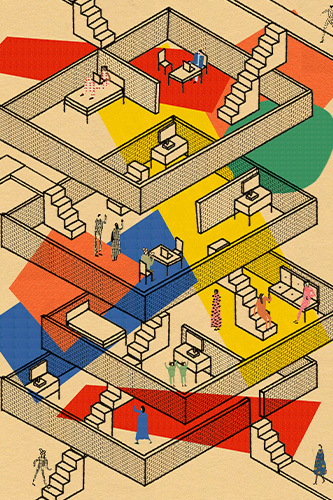Suddenly forced to teach her college courses online when COVID-19 hit, Liuba Belkin was genuinely curious about the impact of the pandemic on a colleague’s work day, given that the woman’s 9-to-5 job as an administrative assistant had previously required her to be on campus each day. Now that her colleague could work remotely, how was she structuring her day?
Her colleague’s answer intrigued her. With everyone remote, the woman told Belkin, other colleagues expected her to be online almost 24/7, blurring work and home responsibilities.
Belkin contemplated her colleague’s answer. Additionally, she herself was feeling somewhat isolated at home, despite being around family. On deeper reflection, she recognized a need for research into the potential impact of the pandemic on workers across jobs and professions.
“The world is changing,” says Belkin, associate professor and director of the management program at Lehigh. “I think COVID was a so-called serendipitous event, because the technology was there. If COVID had happened 10-15 years ago, we wouldn't have had Zoom. I'm not really sure what we would have done. … But the technology was there, and when [the pandemic] happened, it was force-shift to remote work that allowed many office workers to continue to work efficiently at home.”
Choosing to put other research on hold to explore the new phenomena, Belkin subsequently conducted studies with William J. Becker of Virginia Tech, Sarah E. Tuskey of Miami Dade College and Samantha A. Conroy of Colorado State University. Their work has provided insight into how human resources professionals can manage the “new normal” of remote work, as well as how employers can improve their responses to other cataclysmic events.
“As managers and HR professionals, we need to understand and adapt to the desires and needs of employees,” Belkin says. She cautioned, however, “There is no one-size-fits-all kind of solution because not everyone wants to be completely remote.”
Since the widespread shift to remote work in March 2020 was abrupt and mandatory, many human resources departments did not have policies in place to govern remote work. In addition, the researchers noted, the uncertainty around the length, severity and economic impact of the pandemic increased the difficulty in managing employees in the new environment and exacerbated a unique feature of the crisis–the degree of isolation that people felt in social distancing and working remotely.






